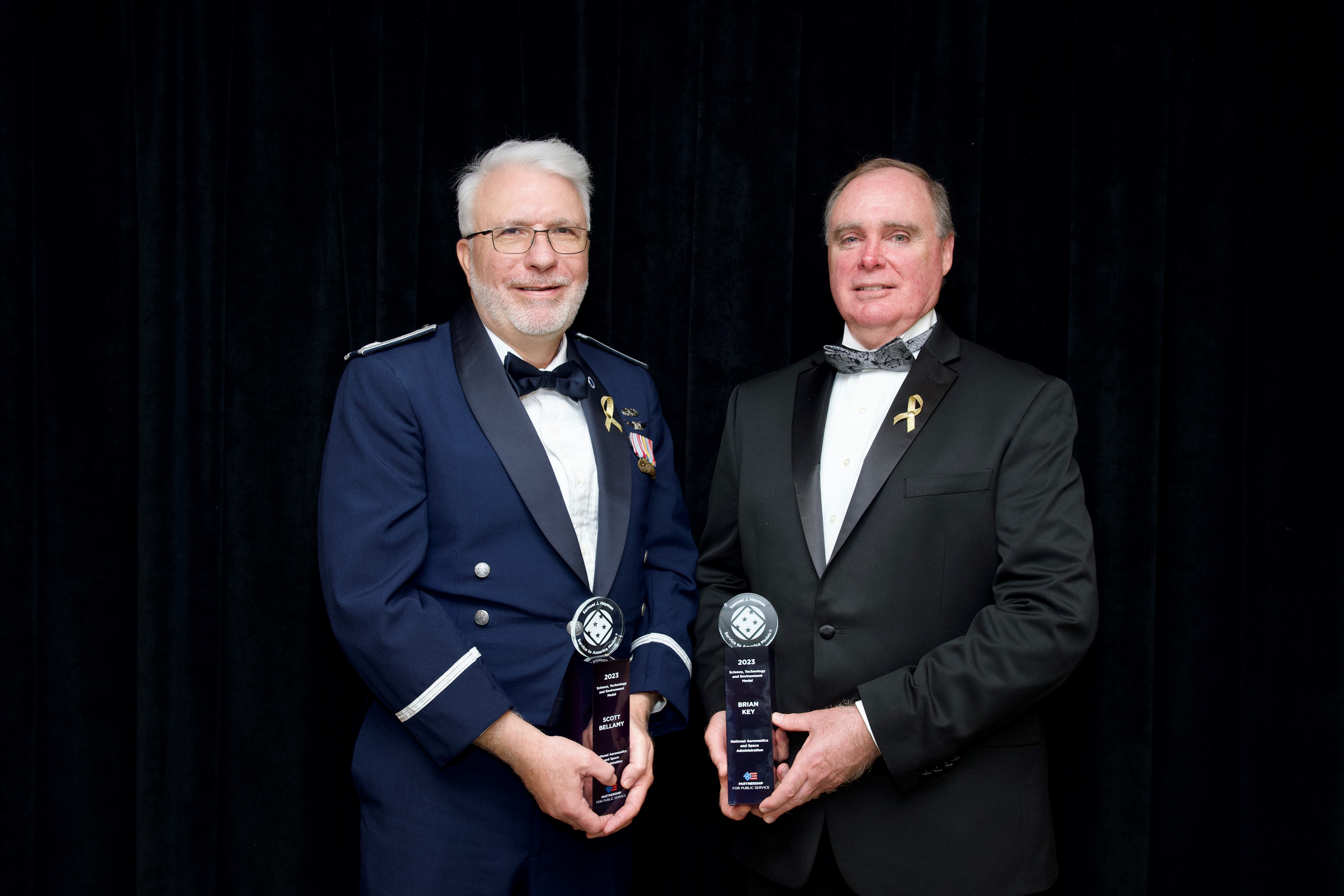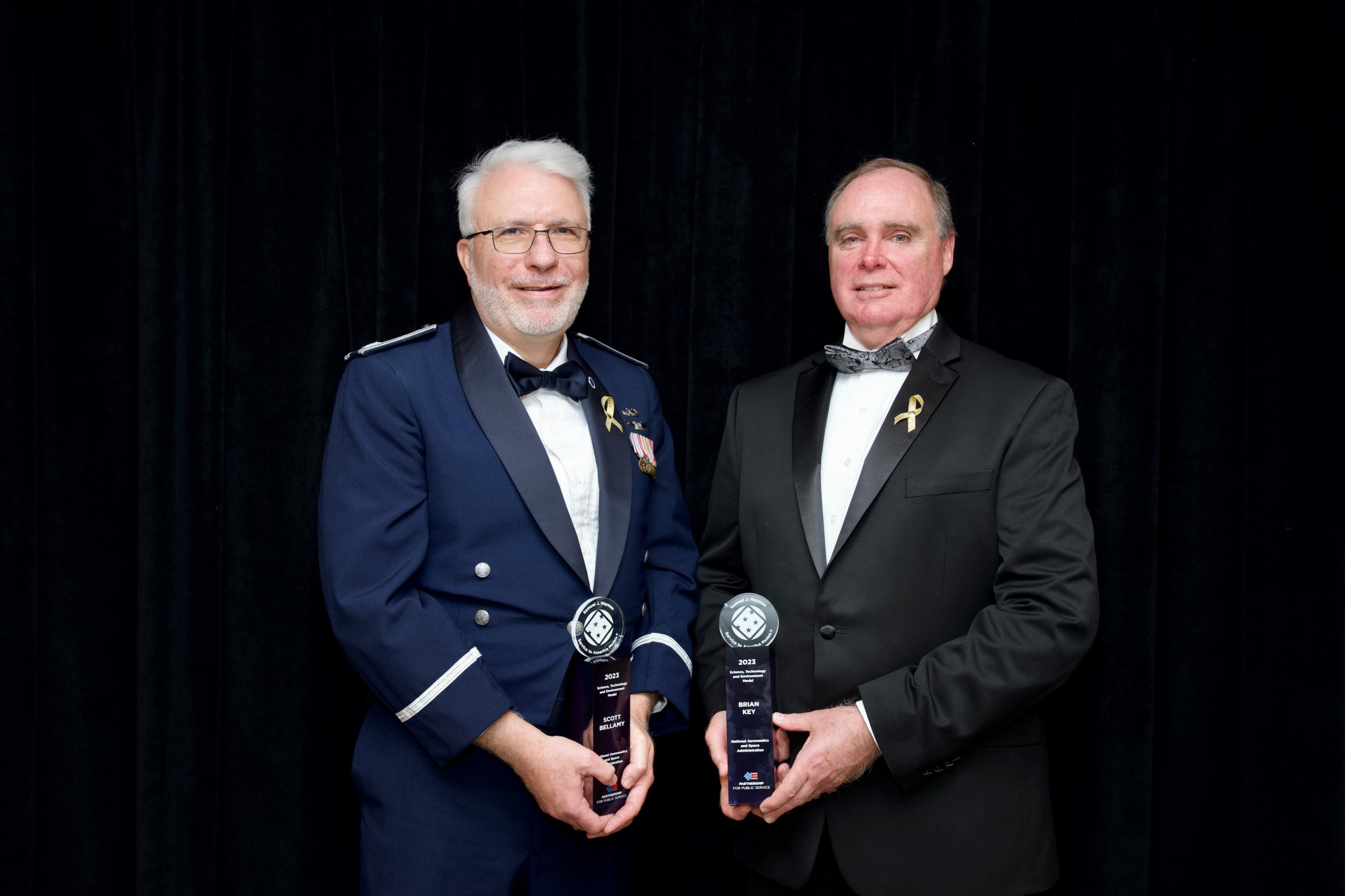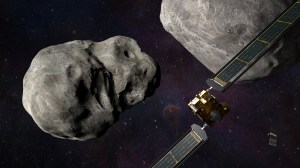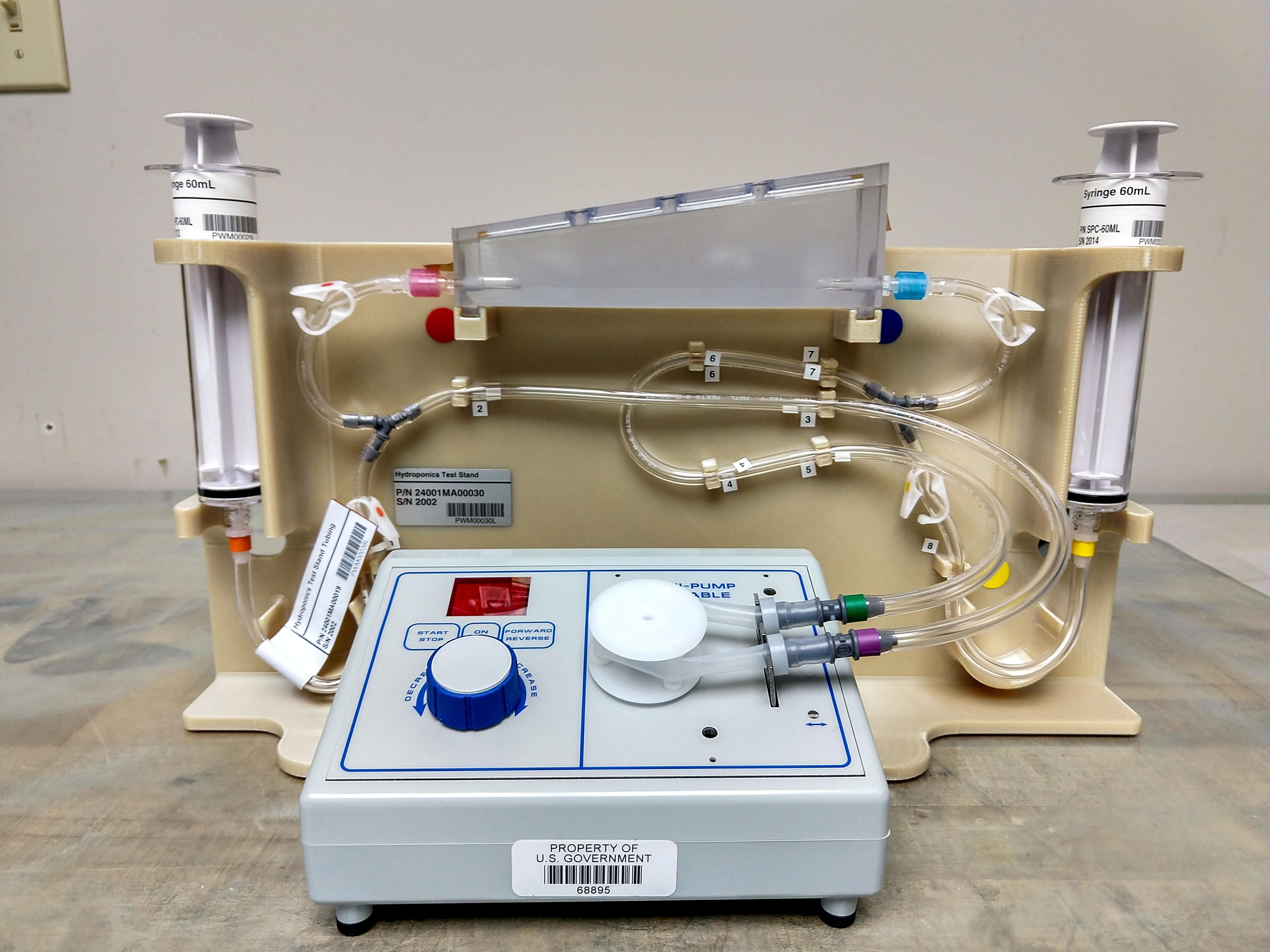NASA Employees Win Top Federal Award for Asteroid Deflection Mission
NASA’s Brian Key and Scott Bellamy accepted the Samuel J. Heyman Service to America Medal on behalf of a mission team for the first planetary defense test during a ceremony at the John F. Kennedy Center for Performing Arts in Washington on Oct. 17. The awards program for career federal employees, known as the Sammies, […]


NASA’s Brian Key and Scott Bellamy accepted the Samuel J. Heyman Service to America Medal on behalf of a mission team for the first planetary defense test during a ceremony at the John F. Kennedy Center for Performing Arts in Washington on Oct. 17.
The awards program for career federal employees, known as the Sammies, aims to highlight key accomplishments that benefit the nation, seeks to build trust in government, and inspire people to consider careers in public service.
Known as DART, NASA’s Double Asteroid Redirection Test mission successfully impacted a known asteroid in September 2022 and altered its orbit, demonstrating one planetary defense method that could be used to protect Earth from a potentially hazardous asteroid on a collision course with our home planet if one were ever discovered.
Key and Bellamy served as program manager and mission manager for DART, respectively, and are based in the Planetary Missions Program Office at NASA’s Marshall Space Flight Center in Huntsville, Alabama. For their work on the mission, the team was honored in the Science, Technology, and Environment category of the Heyman awards.
“DART was a first-of-its-kind mission that marked a watershed moment for planetary defense. The DART team members are some of the very best of NASA, and we are so excited to see Brian Key and Scott Bellamy recognized for their contributions and leadership,” NASA Administrator Bill Nelson said. “Brian, Scott, and the entire DART team have shaped the course of human space exploration, inspiring people around the world through innovation. Thanks to their dedication and hard work, NASA is better prepared to defend our home planet, and will be ready for whatever the universe throws at us.”
In his role on DART, Key maintained budget, staff, and schedule oversight for the mission and worked directly with DART spacecraft developers at Johns Hopkins Applied Physics Laboratory in Laurel, Maryland.
“I’m elated to see our team honored with this award and hope it will bring more attention to the valuable work NASA does to defend our home world,” Key said, who oversees management of NASA’s $2 billion portfolio spanning the Discovery Program, the New Horizons Program, and the Solar System Exploration Program, which covers the full range of large and small science missions exploring the planets, moons, asteroids, comets and other destinations of interest in the solar system.
Bellamy was tasked with keeping the team on track to launch and operate the mission. He echoed Key’s praise for the entire DART team.
“We’re just the managers,” Bellamy said. “Our role has been to serve the team, keeping things moving forward as smoothly as possible to enable them to do the actual hands-on, pencilwork-to-hardware that brought this mission from concept to reality.”
That mission could not have gone more flawlessly, they agreed. Launched in November 2021, the DART spacecraft traveled to more than 6.8 million miles from Earth with one simple goal: to intentionally impact into Dimorphos, a 492-foot-diameter asteroid, at roughly 14,000 miles per hour, thus altering its orbit around its much larger parent asteroid, Didymos. DART’s collision with Dimorphos altered the asteroid’s roughly 12-hour orbit period around its parent by about a half-hour.
“I don’t even have the words to describe the release of emotion in the control room when we got confirmation that DART had impacted,” Bellamy said. “The whole team went from nail-biting suspense to unbelievable excitement in a matter of seconds.”
As for future planetary defense activities, NASA and its partners will build on DART’s success. A follow-up mission by ESA (European Space Agency), called Hera, is scheduled to launch in 2024 to further assess DART’s impact on Dimorphos. NASA also is developing the NEO Surveyor mission, which is designed to accelerate the rate at which the agency can discovery potentially hazardous near-Earth objects, asteroids and comets which can come close to Earth and could pose an impact risk.
Johns Hopkins Applied Physics Laboratory managed the DART mission for NASA’s Planetary Defense Coordination Office. The agency provided support for the mission from several centers, including the Jet Propulsion Laboratory in Southern California; Goddard Space Flight Center in Greenbelt, Maryland; NASA’s Johnson Space Center in Houston; Glenn Research Center in Cleveland; and Langley Research Center in Hampton, Virginia.
Learn more about NASA’s Planetary Missions Program and Planetary Defense Coordination Offices online.
-end-
News Media Contacts
Jackie McGuinness
Headquarters, Washington
202-358-1600
jackie.mcguinness@nasa.gov
Jonathan Deal
Marshall Space Flight Center, Huntsville, Ala.
256-544-0034
jonathan.e.deal@nasa.gov
Discover More Topics From NASA











































